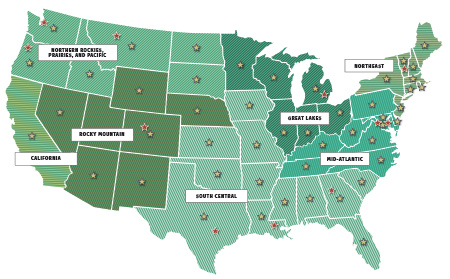The Paris Agreement states that, "Parties should take action to conserve and enhance, as appropriate, sinks and reservoirs of greenhouse gases ... including forests." Approximately 125 gigatonnes (Gt) of carbon are exchanged annually between terrestrial ecosystems and the atmosphere (two-fifths of the total exchange of carbon between the earth and the atmosphere). Forests account for 80 percent of this exchange. U.S. forests currently serve as a carbon "sink," offsetting approximately 13 percent of U.S. emissions from burning fossil fuels in 2011, and from 10 to 20 percent of U.S. emissions each year. These ecosystems are invaluable to the U.S. for their carbon sequestration abilities and for mitigating the impacts of climate change, as well as their habitat value. It is important to create policies that ensure the carbon sequestration abilities of ecosystems are properly maintained through improved forest management and conservation that encourages both carbon sequestration and habitat conservation and restoration.
Alongside farmers, ranchers, and forest managers, the National Wildlife Federation is working to adopt and regularly employ practices that sequester carbon while improving wildlife habitat and natural resources. These practices include:
A new storymap connects the dots between extreme weather and climate change and illustrates the harm these disasters inflict on communities and wildlife.
Learn MoreTake the Clean Earth Challenge and help make the planet a happier, healthier place.
Learn MoreA groundbreaking bipartisan bill aims to address the looming wildlife crisis before it's too late, while creating sorely needed jobs.
Read MoreMore than one-third of U.S. fish and wildlife species are at risk of extinction in the coming decades. We're on the ground in seven regions across the country, collaborating with 52 state and territory affiliates to reverse the crisis and ensure wildlife thrive.
